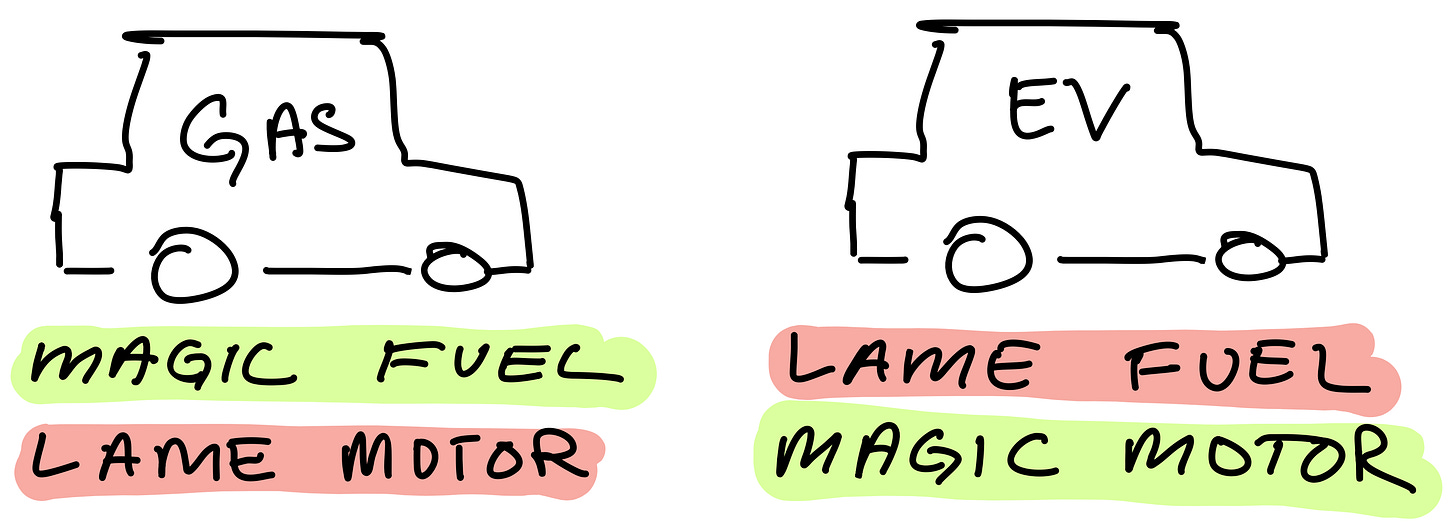Welcome to my newsletter on the electrification of traditionally fossil-fueled stuff. If you were forwarded this post and liked it, please subscribe! We cover 3 things here:
Investments: a company I’ve invested in and why,
Motonerd stuff: how EVs can do things gas can’t, or
Learning science: EV-curious to EV-confident. ← We’re here Dec 1-15
Why I’m running this sketchy series
I love year-end lists.
Tested’s Favorite Things? So good. And Spotify Wrapped! Did I really listen to that much Taylor Swift? Yes. Yes, I did.
I love sketching.
It’s how I start writing anything.
It’s sketchy out there with EVs, right?
Almost 4,000 dealers wrote Biden a letter to let up on the EV pressure, even though EV prices are down 22% and certain brands are flying off lots.
And nobody’s stopping BYD from setting new records with affordable, solid cars. China-based BYD used to be a gas-only manufacturer, just like the folks whose dealers wrote that please-make-it-stop letter. But BYD went all EV in 2022.
And there’s a breathtaking amount of investment in EVs where I grew up — the emerging Southeastern Battery Belt.
So which is it? Sketchy or rosy?
10 sketches to separate signal from noise
By the end of this series you’ll have a rock solid foundation in EVs that’ll help you cut through the noise, get to the signal, and decide for yourself. We’ll sketch about:
how electric vehicles (EVs) work differently than gas vehicles,
why we have a mostly gas vehicle world, and
how the move from gas vehicles to EVs is going in 2023.
We begin with vehicle design
My inner math teacher and inner EV designer have spoken: We begin with a basic equation about vehicle design: fuel + drivetrain = wheels turning.
fuel + drivetrain = wheels turning
The differences in how gas and electric vehicles solve this equation are so fundamentally different that nobody — no fleet manager, no family — should be exploring such a big switch without a basic understanding of how these two platforms differ.
Here’s a sneak peak at sketch #1:
That’s where we’ll start on Monday. See you then!






With multiple hub motors, you have no drive train, which allows the suspension system to articulate in interesting ways.